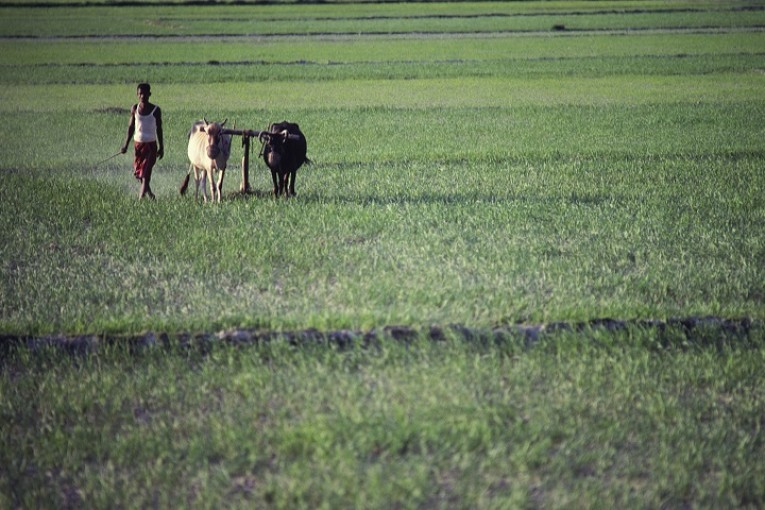
Meghalaya, situated in the north-east region of India, has adopted innovative employment/income generation policies, which are implemented through various projects under its Integrated Basin Development and Livelihood Promotion (IBDLP) Programme launched in 2012, in order to create a statewide institutional ecosystem for ecologically sustainable and economically inclusive development in Meghalaya.
The IBDLP programme, launched with some inputs from the India Water Foundation (IWF), is designed around four pillars – Knowledge Management, Natural Resource Management, Entrepreneurship Development and Good Governance. It is being implemented through nine missions – Aquaculture Mission, Horticulture Mission, Livestock Mission, Sericulture Mission, Tourism Mission, Forestry and Plantation Crops Mission, Apiculture Mission, Energy Mission and Water Mission. Every mission is designed to leverage the comparative advantage that Meghalaya has in that sector, generate livelihood opportunities for every household and accelerate growth.
The East Jaintia Hills District of Meghalaya is an area where people are mostly engaged in mining activities such as lime stone and coal mining. Coal mining has been the main source of livelihood in the entire District and also a part of the state. It is an area where financial and livelihood activities revolve around extraction of nonrenewable resources or fossils fuels which contribute to high return on investment.
Undoubtedly, the people have been making more investments in coal mining businesses rather than any other activities, thus driving out any other activities due to the scale of returns on investment; nevertheless, this mining business has created several problems and negative impacts on the environment. For example soil degradation due to mining has become a serious problem in East Jaintia Hills District.
Therefore, in view of these adverse impacts on the environment, India Water Foundation, as knowledge partner of the Meghalaya Basin Development Authority (MBDA), Government of Meghalaya, in cooperation with MBDA authorities emphasized the need to introduce schemes for the reclamation of land and to provide sustainable livelihoods to the poor and achieve rural development. Capacity building programmes, professional training and technical/financial support by various institutions under the aegis of the IBDLP have helped many people from the district to improve their livelihoods and therefore an augmentation in their incomes. Two success stories follow.
Success Story: Bijoy Wann

Mr. Bijoy Wann, a resident of Moopyniein, Wapungskur Village of East Jaintia Hills District, was first drawn towards a career in mining, but in the aftermath of undergoing capacity building programmes, he has not only changed his mind but also has shown keen interest in skill upgrading, training and bank linkages on poultry/piggery farming. He owns a big plot of land which is feasible for poultry farming.
He has started constructing the poultry hut. Bijoy has been facilitated by the local branch of Meghalaya Rural Bank (MRB), where he decided to take a general credit card loan. With this loan he bought materials (like cements, blocks etc.) and has started working. He has an ambition of earning his livelihood from livestock activities only. During the past two years, his earnings have tripled to about $ 1,500 per year.
Success Story: Donald Shylla

Mr. Donald Shylla, a resident of Sonapyrdi village, East Jaintia Hills District, has emerged as one of the progressive farmers of the village. He wants to become an entrepreneur, and set an example for others. Capacity building programmes and technical/financial assistance under the IBDLP has enabled him to enhance his earnings through a rubber plantation. He has two plots of land; one in Wahdiekyiad near LumTongseng village and the other at Wahlakhar in Sonapyrdi. In Wahdiekyiad he has planted 600-700 rubber trees since 2005. Through rubber extraction he has earned about $ 3,000 per year. At his other plot at Wahlakhar, which is close to Lukha River in Sonapyrdi village, he has started conducting doing multiple activities such as building fish ponds, cultivating vegetables, fruits etc, in order to generate some income from their land.
He has 3 fish ponds, which produce up to 400-500 kgs of fish very year. He generates an additional income of $ 3,500 per annum through fish and around $1,000 per year from the sale vegetables like tomatoes, potatoes, pumpkins, beans, cucumbers, cabbages and capsicums. He acknowledges that capacity building and programmes under IBDLP have helped him augment his income.
Lessons Learned
Innovative policies and projects sincerely and scientifically managed and implemented via appropriate institutional mechanism yield fruitful results.
Learn more about the India Water Foundation.
Economic Inclusion and Environmental Sustainability: Case Study Meghalaya



